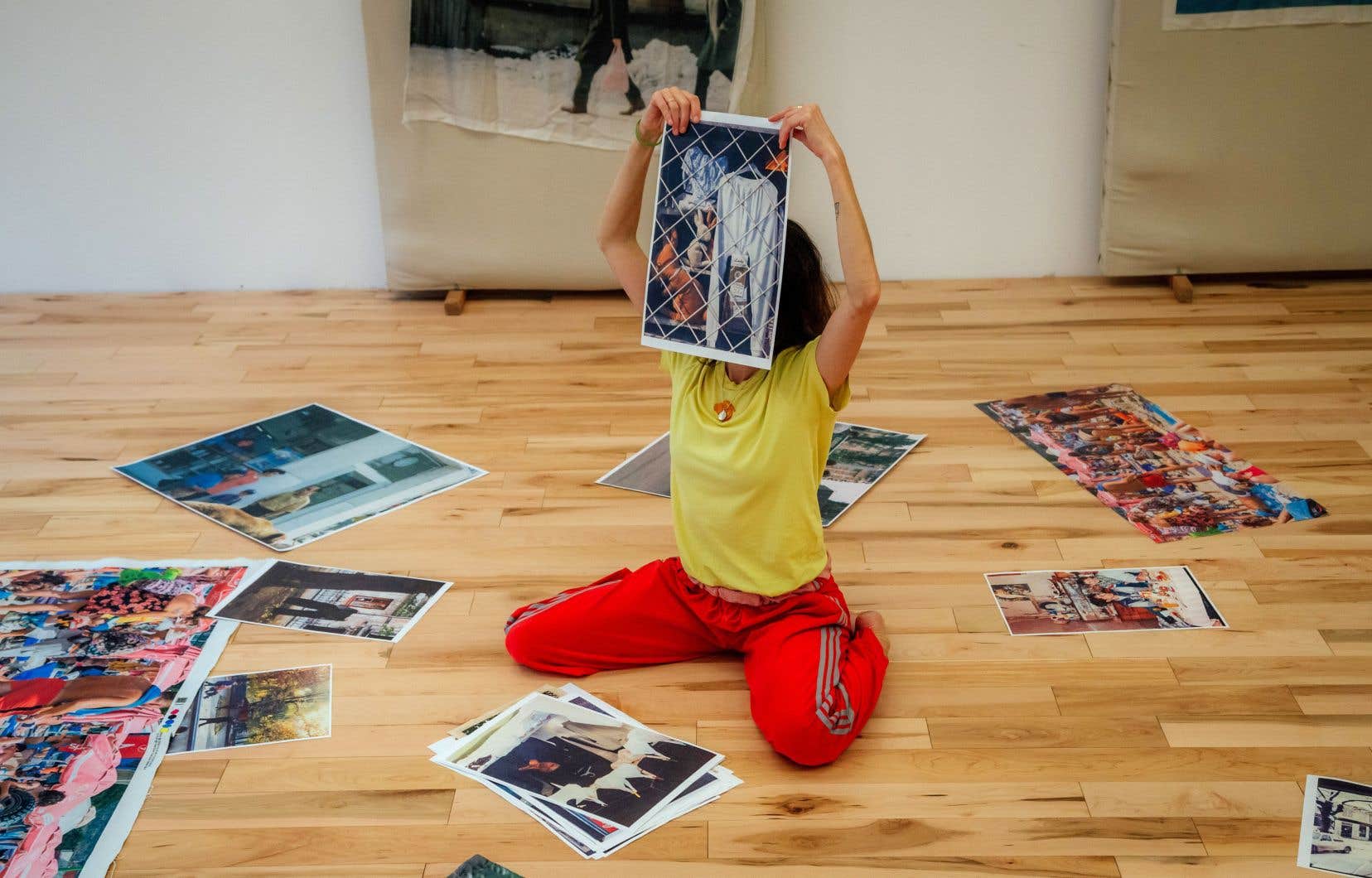Orphan photos from Bulgaria from 1996 to 1998. In one photo, a very dense crowd on the beach. There, two dogs ass to ass sleeping in the street. Here, passers-by. Further on, a cart for selling snacks. And many other photos which invited the choreographer and multi-artist Maria Kefirova on a journey between images, body and invention, past and present, intimacy and spatiality, performance and installation.
“When I went to Bulgaria last time, two or three years ago, there was something in the air that really inspired me,” says Maria Kefirova, originally from Sofia, the capital.
“A kind of absence of causality… how do you say it in French?… Cause and effect. As if things there didn’t want to consolidate. I was curious about that, inspired. »
From the photographic archives of Olivier Tulliez, which she came across as part of her research, somewhat by chance, Maria Kefirova weaves, in The Beach and Other Storiesan experimental tale, a spoken word formal that she delivers in an installation of stretched ropes and fabrics, half darkroom and half garage. Created at the last Festival TransAmériques, the piece returns to us by Danse Cité, this time also in French version.
Accustomed to solos, Maria Kefirova is an artist who experiments. His formal approach navigates between performance, visual arts and philosophy; all filtered, always, by her brain and her body as a dancer and choreographer, by her presence too.
Here, the movement, the main gestures, are those of the stories, invented from each photo and written with the author Michael Martini.
Images of everyday life, abandoned by their author, who left the rights. “These photos are magnificent,” says Kefirova, and they allow her to compose fragments that are “especially not autobiographical,” she explains with a laugh.
“I am interested in making choreographic relationships with words, images, with which I can create bodies, bodily realities. » “And if there are elements of life, of truth, they dissolve in the piece, in the invention, in the collective,” she explains, while admitting that the ambiguity between fiction, the personal, the intimate and the invention is a lively part of the work.
In The Beach as in his previous pieces — The Nutcracker (2012), The Only Reason I Exist Is You, also: Why Dogs Are Successful on Stage? (2016) — she sees her work as undercover work. “Of course it’s political. But I do this obliquely, not frontally. »
“It all revolves around everything that restricts, censors our imagination, my imagination, my creativity. I make art, I’m not a politician or activist, she says. I believe that changes in reality occur latently, that we can act clandestinely, that we can subtly carry out subversion. »
What begins to disappear
She recalls that in Bulgaria, “things have difficulty crystallizing. They exist very briefly, they pass, which means that the systems have difficulty installing. As with access to water, with the taps sometimes not working for a few hours or a few days. »
“Maybe it made me so curious because there were a lot of fragmentations there too, which give the possibility of seeping between things. Maybe also I feel it starting to disappear…”
And that’s what she does there, in Montreal, in her show: pose fragments – words, images, presence, music, a few gestures -, make links from one to the other, and let the spectator to make others, giving him space, freedom of vision and thought.
What has changed the most since the creation at the FTA? The transition to French — the play, last summer, was only presented in English. “It changes, the language. Languages contain different realities. If I say “table” in Bulgarian, in English, in French, it is not the same reality. The body, the tone is different depending on the language spoken. I use it to modify my body. »
